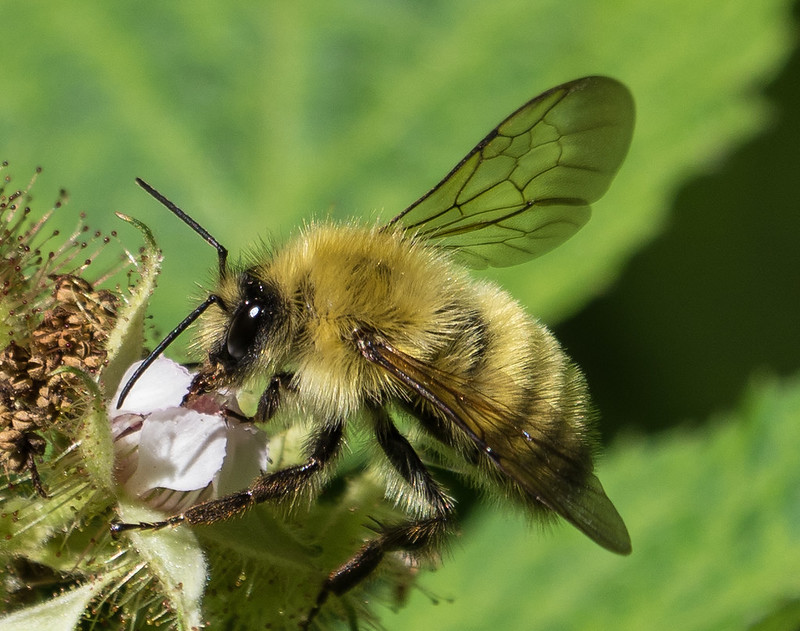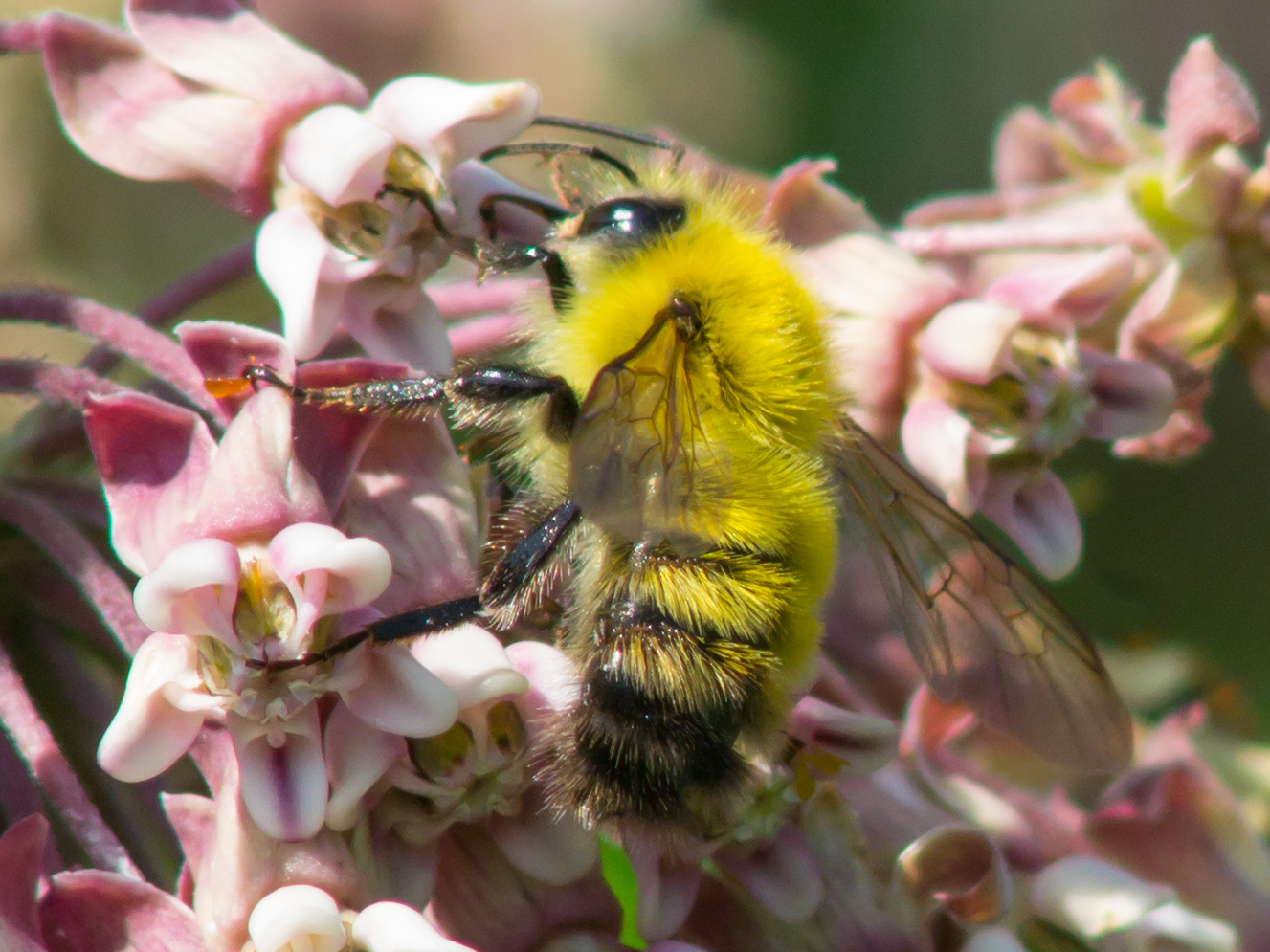Weird Bees
Weirdest Bees
When I started beekeeping as a side hobby, one of my favorite things about it was just learning more about bees, their behavior, hive dynamics, and really just anything else about them. Bees are incredibly fascinating and have been fun to learn about. While my Carniolan honeybees have been a great source of interesting knowledge, our world is home to some incredibly unique and, quite frankly, weird bee species. Let this short article showcase some of the many wacky species out there.
For weird worldly bees, I’d like to direct your attention to Apis laboriosa, or the Himalayan giant honey bee, the world's largest honey bee. Adults can reach 3mm (1.2 inches) in length! They are widely distributed in the Indian subcontinent to Southeast Asia, although they are primarily found in the Hindu Kush Himalayan region. They migrate seasonally to different altitudes to avoid harsh environmental conditions, being found as high as 3,500 meters above sea level and as low as 1,200 meters above sea level. Apis laboriosa is most well known for its honey, widely labeled as “mad honey” for its psychedelic properties. These properties come from grayanotoxin, a natural compound found in honey made from nectar from various rhododendron species. These species include Rhododendron luteum, R. ponticum, and R. simsii. Grayanotoxins are a neurotoxin, and according to the National Insitute of Health, low doses of grayanotoxin can cause dizziness, hypotension, and bradycardia, and high doses can cause impaired consciousness, syncope, atrioventricular block, and asystole due to vagal stimulation.
For some of our weirder bees endemic to the United States, I’ll give leafcutting bees a shout-out. Leafcutting bees belong to the Megachilidae family and are all members of this family, primarily solitary bees. For me, the concept of a solitary bee is already very interesting. Before I started learning more about bees, when I thought of bees in general, a bee hive comprised of hundreds to thousands of individuals was not far off. But Leafcutter Bees, sometimes known as Mason Bees, are solitary! How cool. The females carry pollen on hairs on the underside of the abdomen rather than on the hind legs like other bees. When a bee is carrying pollen, the underside of the abdomen appears light yellow to deep gold in color. They get their name from the materials they build their nests from, using the leaves of almost any broadleaf deciduous plant to construct their home. They construct cigar-like nests that contain several cells. Each cell contains a ball or loaf of stored pollen and a single egg. Leafcutting bees construct these nests in soil, holes (usually made by other insects), wood, and plant stems. They have also been observed using snail shells or holes found in concrete.
But the last bees I’ll highlight are sweat bees! Like leafcutter bees, some species of sweat bees may be solitary. Interestingly enough, species like Halictus rubicundus can switch between solitary and social behaviors. Sweat bees are made up of both metallic and non-metallic bees. Some can be found in shimmering colors ranging from blues, greens, and even purples. They are generalists, visiting whatever flower they feel like. One of the most noticeable traits of sweat bees is their attraction to perspiration, which offers them precious moisture and salts. So, if you happen to see an iridescent bee land on your arm, it may be a sweat bee popping by for a quick snack of the essential salts in your sweat.
Bonus Bee!
A personal favorite of mine, Bonus perplexus, the Confusing Bee. I just really love this bee because I think it’s scientific name is funny sounding, and it ties in so well with its common name of the confusing bee. They are particularly fuzzy bumblebees and are quite uncommon to find! Not much is known about this species and, being true to its name, is easily confused with other more common species which makes accurate research quite challenging!


References: Photos from Maryland Biodiversity Project, credit to Timothy Reichard







Comentarios
Agregar un comentario